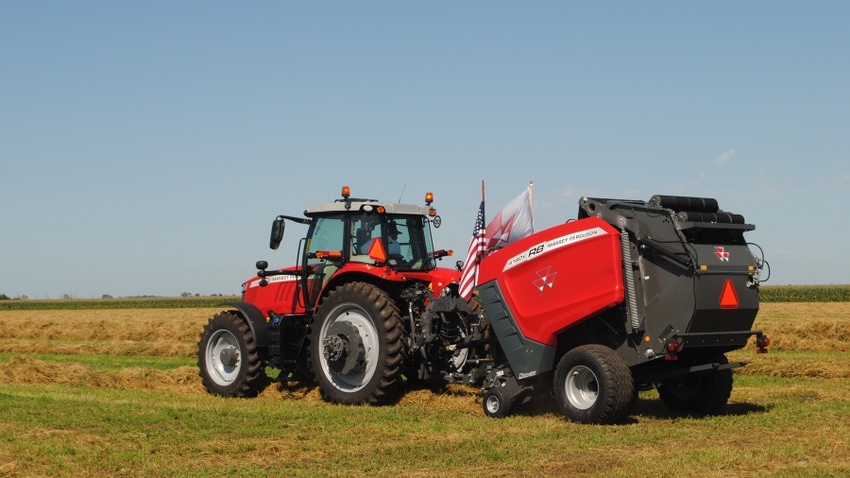
Many farm innovations that producers appreciate most across the Great Plains involve making hay. The task, once done by hand, was time-consuming and took plenty of labor.
Anyone who spent hot, dusty hours in a haystack — pulling in and stomping down the corners and piling the hay to top out a stack — appreciated the new technology of the Hesston StakHand when it first hit the market in 1970.
At the time, it was the first loose hay stacker commercially available. The six-ton capacity StakHand 60, for instance, made a stack that was 8 by 20 by 11 feet.
Corn stover
We found an ad in the Sept. 4, 1976, issue of Nebraska Farmer, touting the benefits of using a StakHand to put up corn stover. The ad notes that the machine, which produced what many farmers would call “breadloaf” stacks, could be equipped with paddle pickups to harvest and stack standing stover in one pass through the field. This made putting up stover a one-person job.
StakHand was available at the time in (Model 10) 1-, (Model 30) 3-, and (Model 60) 6-ton capacity models, with production rates of 80 tons of hay per day well within their abilities. There were farmers who were making 6-ton stacks traveling 12 mph through the field.

STACK IT UP: This ad in the September 1976 issue of Nebraska Farmer talks about the relatively new technology of Hesston’s StakHand, and how well it worked to put up corn stover in the fall.
At the time, they were the quickest method of putting up hay. Thanks in part to the StakHand, Hesston, based in Hesston, Kan., was the country’s ninth-largest equipment manufacturer and the top manufacturer of haying equipment in the nation by the mid-1970s, employing more than 2,500 workers. To complement the StakHand, Hesston also produced the StakMover and the StakFeeder.
Founded by Lyle Yost and Adin Holdemann in Hesston, Kan., in 1947, Hesston Machine and Manufacturing began by building an unloading auger that increased productivity and safety. In 1955, Hesston entered the haymaking industry, introducing the first self-propelled windrower — a Hesston 100.
Round balers came along
At the height of popularity of the StakHand, in 1976, Hesston began to have financial challenges. The company sold controlling interest shares to Fiat Corp., based in Italy, but manufacturing remained in Kansas. In 1991, Agco purchased Hesston, and that’s where the company is today, under the Massey-Ferguson lineup.
Today, old StakHands are still employed in the field in many parts of the country — particularly in the West — and they remain quite popular with some farmers for putting up corn stover. However, the machines lost popularity among farmers with the arrival of efficient large round balers and large square balers on the market. The last Hesston 60B StakHand was made in 1985.
The legacy of the StakHand, perhaps, is that when it came into the market, these machines offered one of the first one-person haying operations, so farmers could get the hay in a form that could be handled with machinery and safely stored in the field. It took the haymaking labor pressure off many operations for the first time, particularly for those farms depending heavily on forages.
About the Author(s)
You May Also Like






